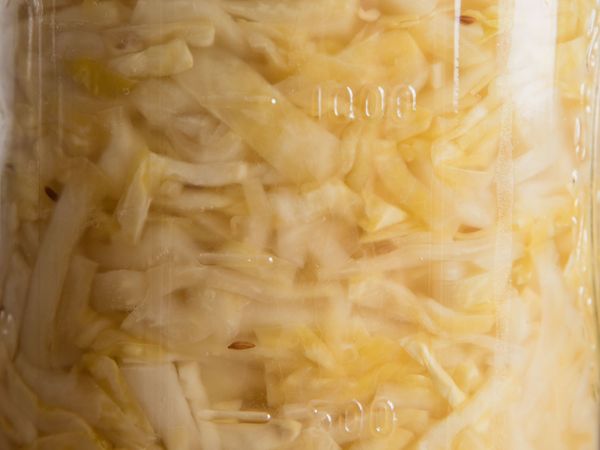
Homemade Fermented Sauerkraut

Diets
Ingredients
Produce
Baking & Spices
Found on seriouseats.com
Description
[Photograph: Vicky Wasik] Fermenting your own sauerkraut is one of the most fun cooking projects, and its surprisingly easy to do. All you need is some basic equipment, and you can get fermenting right away, with the help of salt and friendly, naturally occurring lactobacillus bacteria. We recommend using either a German-style ceramic fermentation crock, which comes with its own stone weights, or half-gallon glass Ball jars with Easy Fermenter or other airlock lids and glass fermentation weights. A gram scale is also helpful for accurately weighing small quantities of salt.
Ingredients
Directions

| Title: | Homemade Fermented Sauerkraut Recipe |
| Descrition: | Fermenting your own sauerkraut is one of the most fun cooking projects, and it's surprisingly easy to do. All you need is some basic equipment, and you can get fermenting right away, with the help of salt and friendly, naturally occurring lactobacillus bacteria. |
Homemade Fermented Sauerkraut
Produce
Baking & Spices
The first person this recipe

Found on seriouseats.com
Serious Eats
Homemade Fermented Sauerkraut Recipe
Fermenting your own sauerkraut is one of the most fun cooking projects, and it's surprisingly easy to do. All you need is some basic equipment, and you can get fermenting right away, with the help of salt and friendly, naturally occurring lactobacillus bacteria.